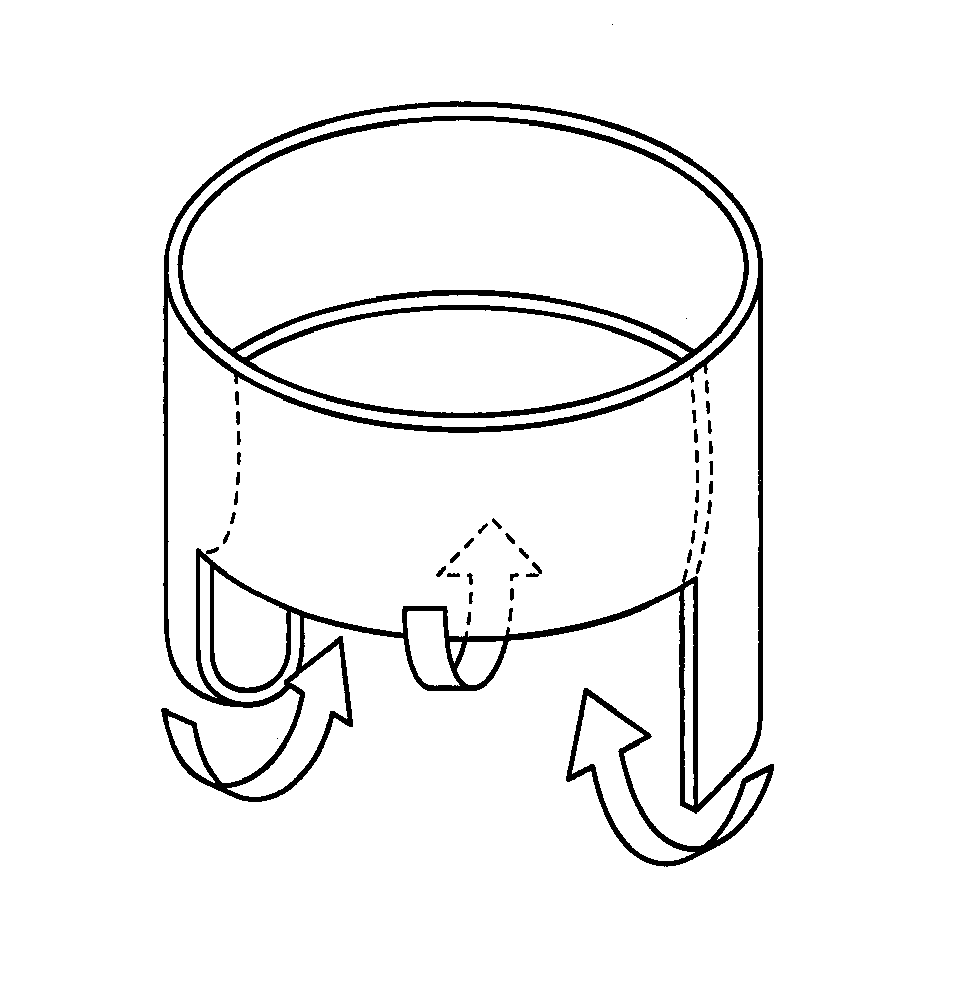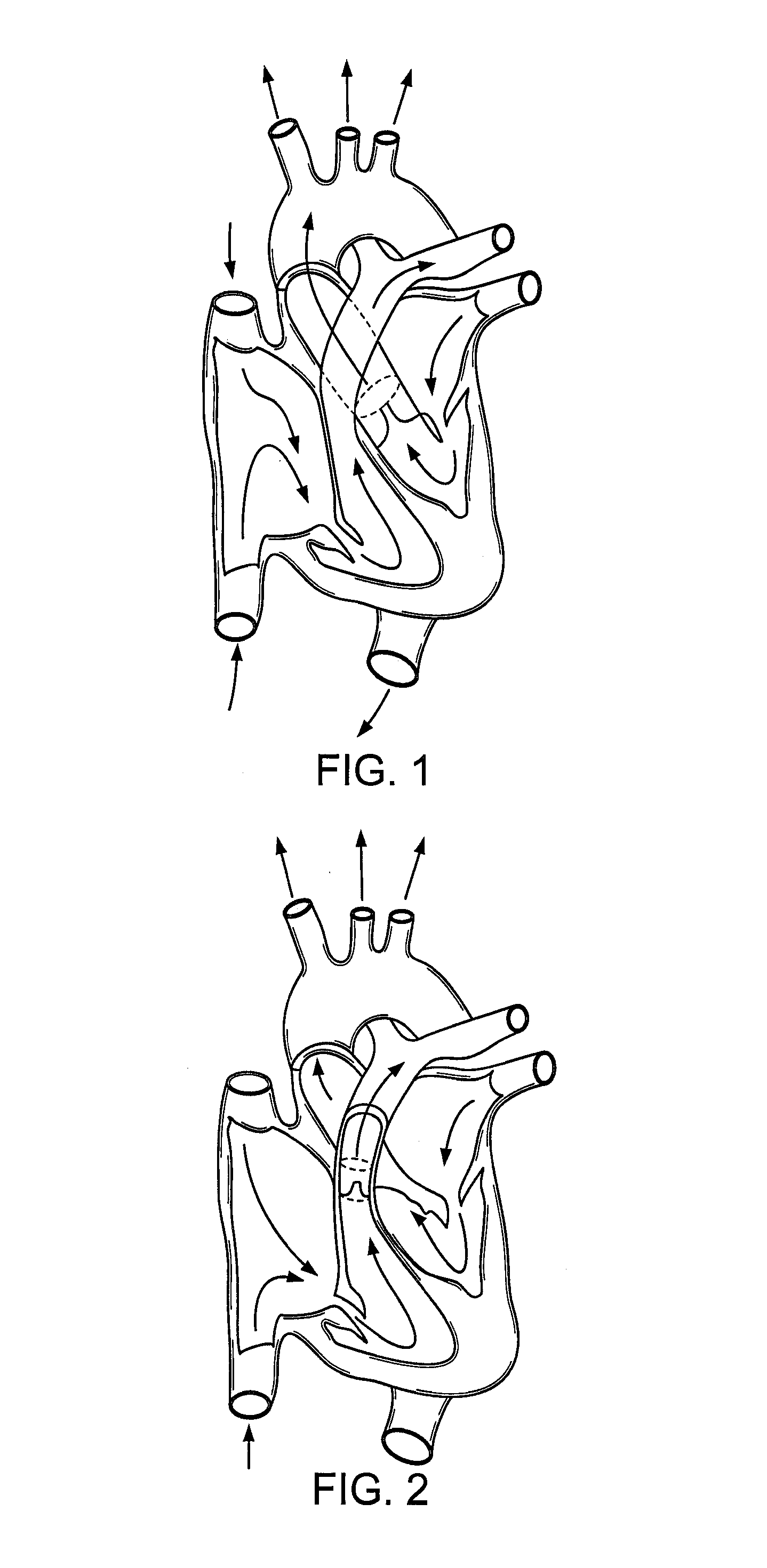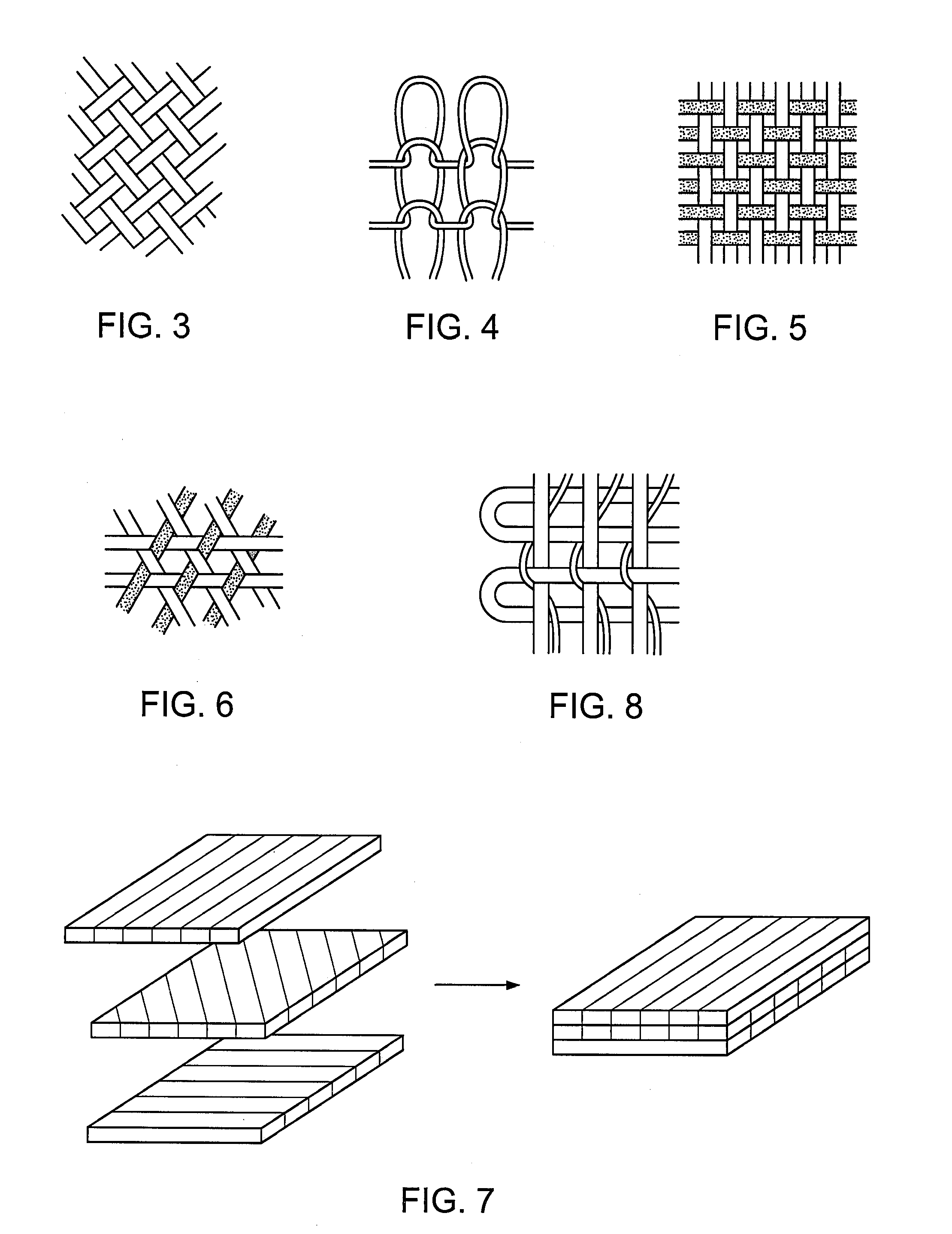Involuted endovascular valve and method of construction
a technology of endovascular valves and valves, which is applied in the field of prosthetic valves, can solve the problems of lack of longevity of tissue valves, significant problems associated with both types of valves, and tend to degenerate rapidly, and achieve the effects of increasing the potential strength and durability of valves, and reducing the risk of recurren
- Summary
- Abstract
- Description
- Claims
- Application Information
AI Technical Summary
Problems solved by technology
Method used
Image
Examples
example 1
[0108]A tri-leaflet tissue valve can be constructed from the main pulmonary artery by the involution method and implanted into the aortic position in sheep (see experiment 1). This valve may also be suitable as a replacement for other valves (e.g., pulmonary valve).
Objective
[0109]An involuted cylinder valve constructed from pulmonary artery tissue and implanted in the aortic position in sheep.
Materials and Methods
[0110]From previously sacrificed donor swine (n=4, 50 kg+ / −10 kg), the main pulmonary artery and its main left and right branches were harvested. The main pulmonary artery trunk was trimmed to create a tissue cylinder of height equal to the diameter of the recipient aortic annulus. A=h≈d, where A=recipient aortic annulus diameter (mm), h=tissue cylinder height (mm), and d=tissue cylinder diameter (mm). Excess fat was trimmed from the specimen and adventitial layer was carefully peeled off as a single sheet of tissue and discarded. The tissue cylinder was incised with tree l...
example 2
[0115]A scaffold is constructed of decellularized porcine small intestinal submucosa. The involution method described above is used to form a functional three-dimensional valve. The valve is implanted into the individual and allowed to mature under in vivo conditions.
Objective
[0116]A Pulmonic Valve Replacement in Sheep Using an Involution Valve Constructed of Porcine Small Intestinal Submucosa
Materials and Methods
[0117]A sheet of 4-ply porcine small intestinal submucosa “SIS” (Cook, Inc.) of dimensions 68.2 mm long×20 mm wide was prepared. Two equidistant 8 mm long incisions were created extending from the free edge of the length to centerline of the material. The flat sheet was folded in half along the length with the smoother surface on the inside. A cylinder was formed by suturing the two free ends together with a running 7-0 prolene. The leaflets were secured in a perpendicular manner to the inner wall of the cylinder by “U” sutures. Two additional sheets of SIS were sutured to ...
example 3
[0121]A sheet of the patient's pericardium is harvested and formed into a valve construct using the involution method as described hereinabove at the surgical backtable. The valve construct is tested, then reimplanted into the same patient as a living autologous valve replacement.
PUM
| Property | Measurement | Unit |
|---|---|---|
| diameter | aaaaa | aaaaa |
| pore sizes | aaaaa | aaaaa |
| pore sizes | aaaaa | aaaaa |
Abstract
Description
Claims
Application Information
 Login to View More
Login to View More - R&D
- Intellectual Property
- Life Sciences
- Materials
- Tech Scout
- Unparalleled Data Quality
- Higher Quality Content
- 60% Fewer Hallucinations
Browse by: Latest US Patents, China's latest patents, Technical Efficacy Thesaurus, Application Domain, Technology Topic, Popular Technical Reports.
© 2025 PatSnap. All rights reserved.Legal|Privacy policy|Modern Slavery Act Transparency Statement|Sitemap|About US| Contact US: help@patsnap.com



